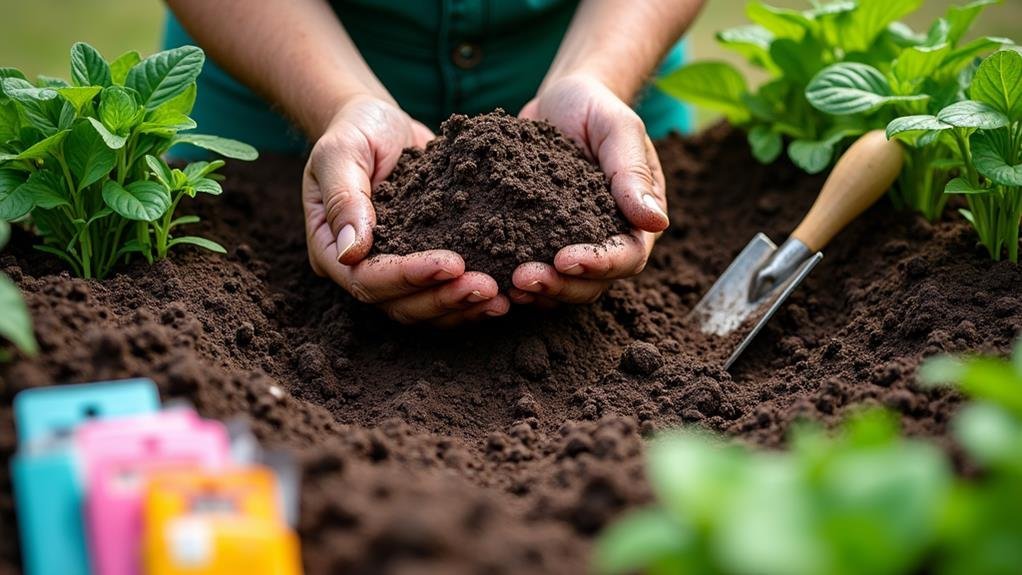As a home gardener, you know that successful planting begins with quality soil preparation. Start by evaluating your soil's texture and color, which can reveal a lot about its health. From there, testing the pH levels can help you understand nutrient availability. But that's just the beginning; incorporating organic matter and aerating compacted soil are essential steps that can transform your garden's potential. Curious about how these practices can specifically impact your plants' growth? Let's investigate some effective techniques that can set your garden up for success.
Assessing Your Soil Quality
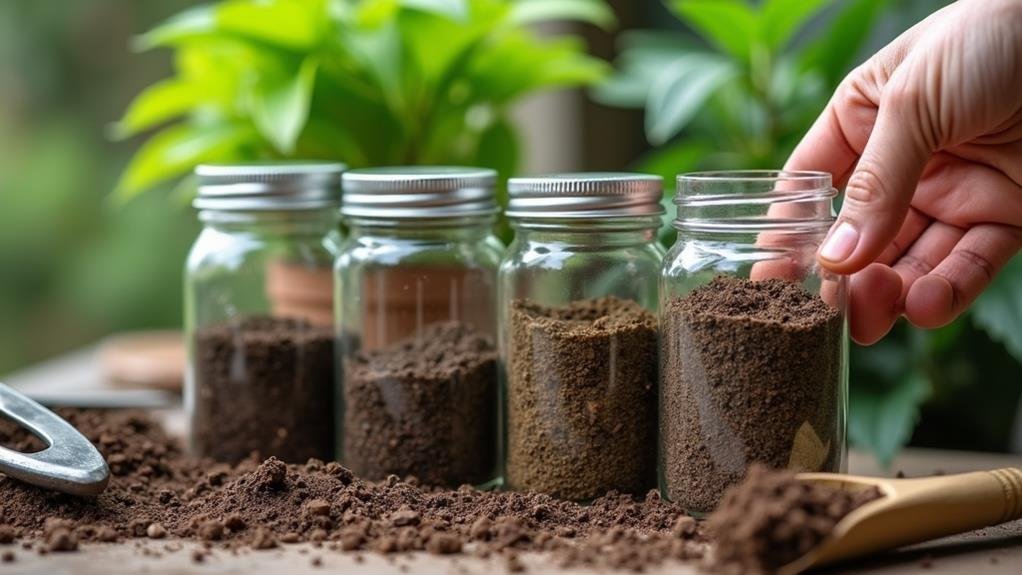
Evaluating your soil quality is essential for a thriving garden, and it doesn't have to be complicated. Start by observing its color and texture. Dark, crumbly soil often indicates good organic matter, while light, sandy soil may lack nutrients.
Grab a handful of soil and squeeze it; if it forms a ball, it's likely clay-rich, while loose soil crumbles easily. This simple test helps you gauge drainage and structure.
Next, look for signs of life. Earthworms and other microorganisms are excellent indicators of healthy soil. If you spot these critters, you're on the right track. You should also check for compacted areas; if it's hard to push a garden fork into the soil, it may need aeration.
Lastly, consider the soil's moisture retention. Dig a small hole and fill it with water. If it drains away quickly, your soil might struggle to hold onto moisture, which can affect your plants.
Taking these steps will give you a clearer picture of your soil's health, helping you make informed decisions for your garden's success. Happy gardening!
Testing Soil Ph Levels
Testing your soil's pH levels is essential for guaranteeing ideal plant growth and health. The pH scale ranges from 0 to 14, with 7 being neutral. Most plants thrive in slightly acidic to neutral soil, ideally between 6.0 and 7.0. If your soil's pH is too low or too high, it can affect nutrient availability, leading to poor plant health.
To test your soil, you can use a simple home kit, which you can find at garden centers or online. Follow the instructions carefully; usually, it involves mixing a soil sample with a testing solution and comparing the color change to a chart.
Alternatively, you can send a sample to a local extension service for a more detailed analysis.
Once you know your soil's pH, you can take steps to correct it if needed. Remember, changes won't happen overnight. It may take time for amendments to adjust the pH.
Regular testing keeps you informed and guarantees your plants get the nutrients they need to thrive. So, roll up your sleeves, and let's dig into some testing!
Incorporating Organic Matter
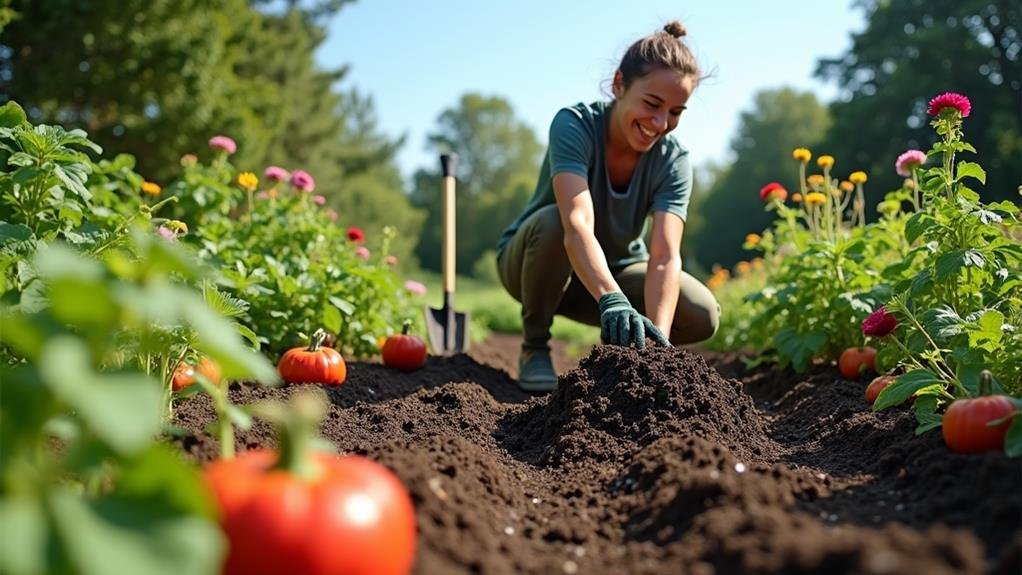
Improving your garden's soil with organic matter is an essential step in creating a thriving environment for your plants. Organic matter improves soil structure, increases nutrient availability, and boosts moisture retention.
To get started, consider adding materials like compost, well-rotted manure, or leaf mold to your garden beds. These materials not only enrich the soil but also promote beneficial microbial activity.
When incorporating organic matter, aim for a mix of about 25% organic material to 75% existing soil. This ratio guarantees your soil retains its structure while benefiting from the added nutrients. Spread a layer of your chosen organic material over the soil and use a garden fork or tiller to mix it in well.
Don't forget to check the texture of your soil. If it feels heavy and clay-like, adding organic matter can help break it up. If it's sandy, organic matter will help it retain moisture better.
Aerating Compacted Soil
After enriching your soil with organic matter, it's important to guarantee that it remains well-aerated. Compacted soil can hinder root growth and water absorption, making it harder for your plants to thrive.
So, how do you aerate your soil effectively?
First, consider using a garden fork or an aerator tool. If you're using a garden fork, simply push it into the soil about 3-4 inches deep and wiggle it slightly to create air pockets. Repeat this process every few inches across your garden area. An aerator tool, which has spikes or hollow tines, can also be a great investment for larger spaces.
Timing is key, too. Aerate during the growing season when your plants are actively using nutrients and water. Avoid aerating when the soil is overly dry or wet, as this can cause more compaction.
Additionally, you might want to mix in some more organic matter while aerating. This won't only improve aeration but also boost your soil's nutrient profile.
By regularly aerating your compacted soil, you'll set the stage for healthier plants and a more productive garden.
Happy gardening!
Mulching for Moisture Retention
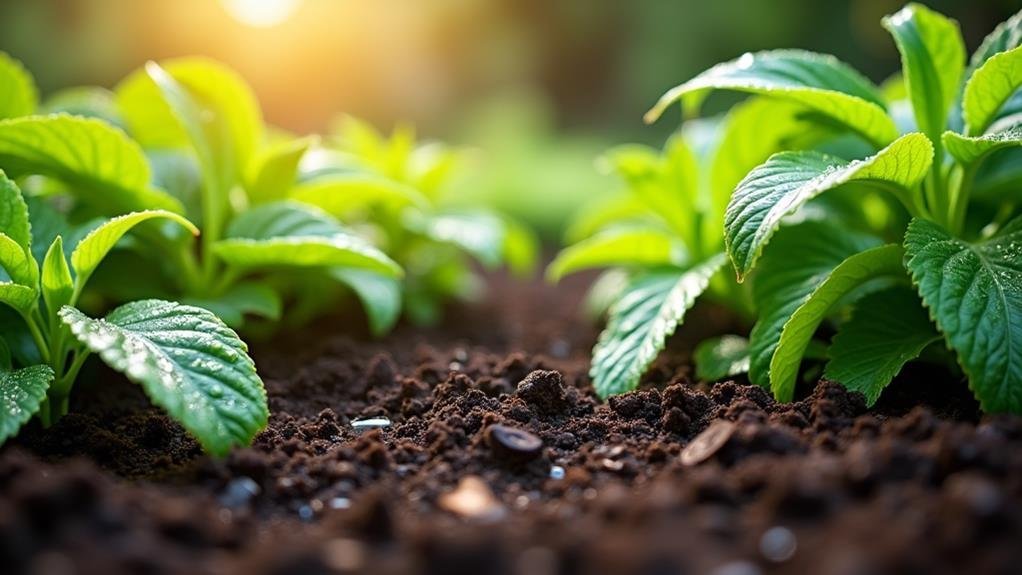
Mulching serves as an essential technique for conserving moisture in your garden, helping to keep your plants hydrated and healthy. By applying a layer of organic or inorganic material on the soil surface, you create a barrier that reduces evaporation. This means less frequent watering for you, which is always a win!
When choosing mulch, consider options like straw, wood chips, or grass clippings. Organic mulches not only retain moisture but also improve soil quality as they decompose. Aim for a layer about 2 to 4 inches thick, ensuring it doesn't touch the stems of your plants to prevent rot.
In addition to moisture retention, mulching helps regulate soil temperature, keeping it cooler in summer and warmer in winter. This can give your plants a more stable environment to thrive.
Plus, it suppresses weeds, which compete for water and nutrients.
Don't forget to refresh your mulch regularly, as it can break down over time. With proper mulching, you'll notice healthier plants and a more manageable garden.
Seasonal Crop Rotation
Maintaining soil health is just as important as keeping your garden hydrated. One effective way to achieve this is through seasonal crop rotation. By rotating your crops each season, you can prevent soil depletion and reduce the risk of pests and diseases. Different plants absorb various nutrients from the soil, so changing their placement helps replenish those nutrients over time.
Start by grouping your plants into categories based on their nutrient needs. For example, legumes like beans and peas enrich the soil with nitrogen, while heavy feeders like tomatoes and peppers deplete it. By following a rotation plan, you'll allow the soil to recover and maintain its fertility.
When planning your rotation, think about the seasons. Cool-season crops, such as lettuce and broccoli, can be planted in early spring or fall, while warm-season crops, like squash and cucumbers, thrive in the summer.
Fertilizing for Optimal Growth
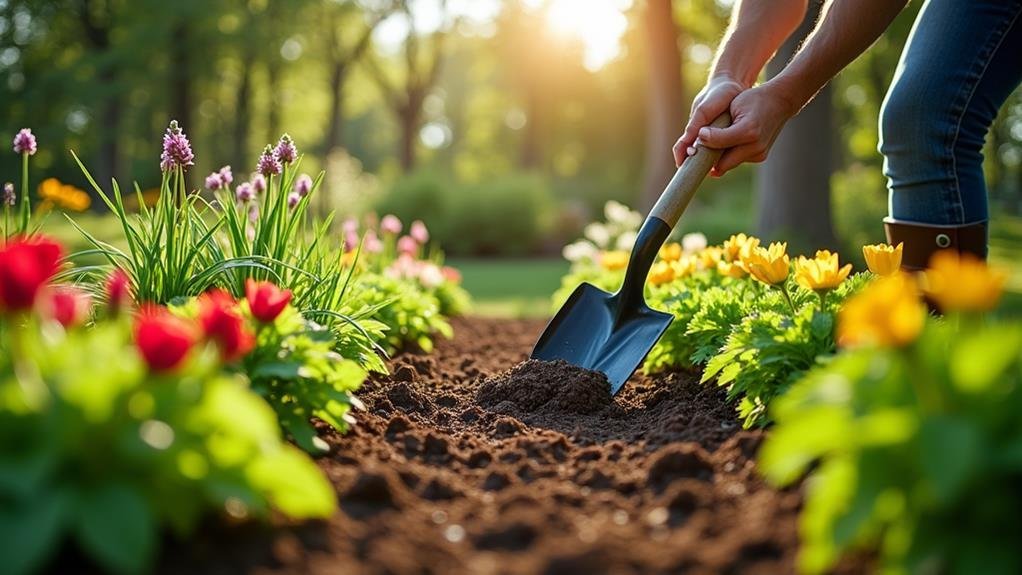
To boost your garden's productivity, it's essential to fertilize effectively. Start by understanding the specific nutrient needs of your plants. Most plants require three primary nutrients: nitrogen, phosphorus, and potassium. These are often found in commercial fertilizers labeled with an N-P-K ratio.
Choose a fertilizer that matches your plants' growth stage—use high nitrogen for leafy greens, while fruiting plants benefit from higher potassium.
Timing is also vital. Apply fertilizer when plants are actively growing, typically in the spring and mid-summer. Be careful not to over-fertilize, as this can lead to nutrient burn, which can harm your plants. Instead, follow the instructions on the fertilizer package, and consider a soil test to tailor your approach.
Additionally, organic options like compost or well-rotted manure can enrich your soil naturally. They improve soil structure, retain moisture, and provide a slow release of nutrients.
Remember, a little goes a long way! By properly fertilizing your garden, you'll not only promote ideal growth but also contribute to a healthier ecosystem.
Happy gardening, and may your plants flourish!
Conclusion
By following these soil prep tips, you'll set your garden up for success. Assess your soil quality, test pH levels, and incorporate organic matter to create a rich environment for your plants. Don't forget to aerate compacted soil and apply mulch for moisture retention. With these steps, plus seasonal crop rotation and proper fertilization, you'll cultivate a thriving garden that flourishes with healthy growth. Happy gardening—your plants will thank you! It’s also important to have the essential gardening tools on hand, such as a quality shovel, rake, and hand trowel. These tools will help you effectively prepare the soil and maintain your garden throughout the growing season. By investing in the proper equipment and following these soil prep tips, you’ll be well on your way to enjoying a bountiful and beautiful garden.



